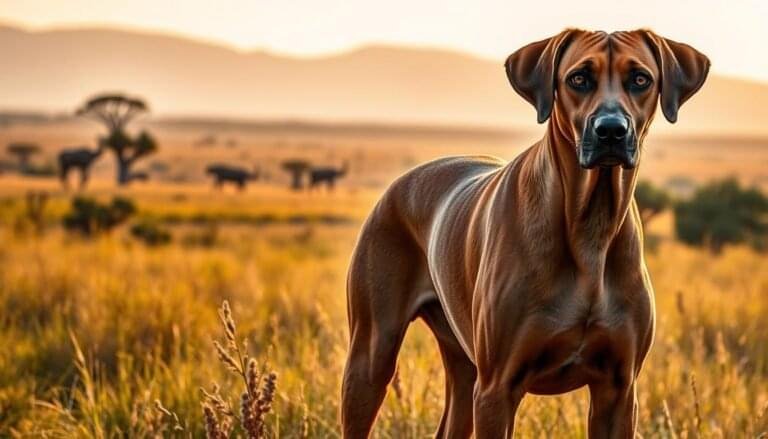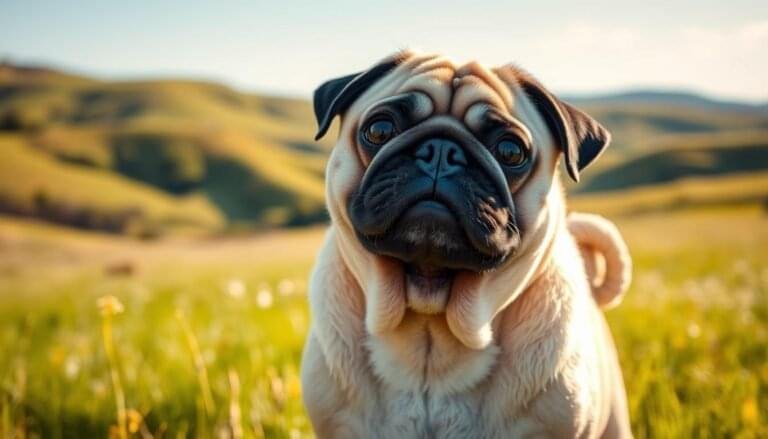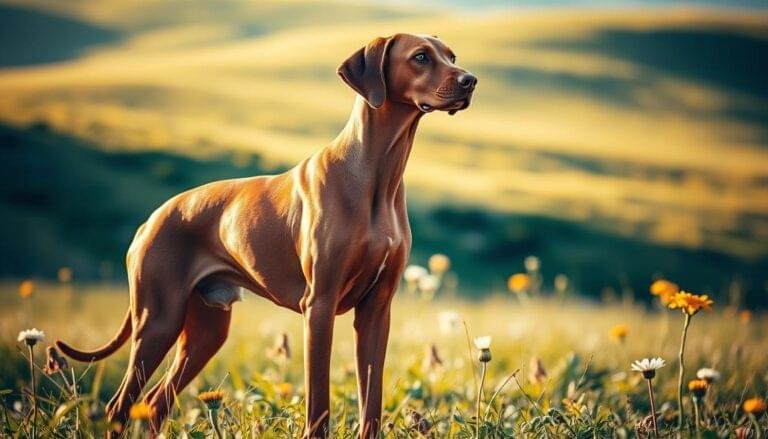Did you know that Malinois dog surrenders have doubled in the last ten years? This shows how important it is to know about this breed before getting one. The Malinois, a Belgian Shepherd variant, is known for its work in the military and law enforcement. But there’s a lot more to these smart dogs than you might think.
I’m here to take you through the Malinois dog world. We’ll cover their history, today’s challenges, and what it means to own one. If you’re thinking about getting a Malinois or just want to learn more, this guide has all the key information you need.
The Malinois breed started in late 19th century Belgium. It was created alongside three other Belgian Shepherd types. These dogs are known for their hard work and versatility. They’ve moved from herding sheep to working in the military, search and rescue, and as loving family pets.
Key Takeaways
- Malinois dogs need a lot of training and socialization.
- They have lots of energy and need to exercise often.
- The breed lives for 13-15 years.
- Malinois are great at work and in dog sports.
- Understanding the breed well is key to avoiding giving them up.
- They bond strongly with their owners and are easy to train.
Training Your Malinois Dog
Training a Malinois dog needs dedication and understanding. These smart Belgian Sheepdogs learn quickly, making training both rewarding and challenging. I’ll help you with the key steps to train your Malinois and make them a well-behaved friend.
Importance of Early Training
It’s important to start training your Malinois early. Socialization should start between 4 and 14 weeks old. I suggest signing up for puppy classes as soon as you can.
These classes are great for socialization. They let your Malinois meet other dogs and people.
Consistency in Training
Consistency is key in training a Belgian Sheepdog. Create a routine for meals, walks, and playtime. This helps manage their energy and separation anxiety.
Keep training sessions short. Adult dogs need 10-15 minutes, while puppies need even less.
Positive Reinforcement Techniques
Positive reinforcement is the best way to train a Malinois. Use treats, toys, or praise to motivate them. Clicker training is also effective, giving immediate feedback.
Remember, every dog is different. Try different methods to see what works best for your Malinois.
| Training Aspect | Recommendation |
|---|---|
| Daily Exercise | 60-90 minutes |
| Training Session Length | 10-15 minutes (adults) |
| Socialization Period | 4-14 weeks old |
| Mental Stimulation | Puzzle toys, interactive games |
Malinois are high-energy working dogs. Without proper training and stimulation, they might get destructive. Add mental challenges like puzzle feeders and problem-solving games to your daily routine.
This will keep your Belgian Sheepdog’s mind active and happy.
Exercise Requirements for Malinois
The Malinois is a high-energy herding and protection dog. They need the right exercise to stay healthy and happy. Let’s explore how to meet their physical and mental needs.
Daily Walks
Malinois need three walks a day. I suggest off-leash walks of 40 minutes to 1.5 hours in the morning. They keep their puppy energy until 3 to 5 years old, so regular exercise is key.
Interactive Playtime
Make sure your Malinois gets daily playtime. I recommend 10 minutes of ball and tug play after obedience. In summer, swimming is a great option. But, yard play with other dogs should be limited to 30 minutes to avoid overexcitement.
Mental Stimulation Activities
Mental exercise is just as important for this smart breed. I include 20-minute obedience training sessions 5 afternoons a week. This keeps their mind sharp and reinforces their protective instincts.
| Activity | Duration | Frequency |
|---|---|---|
| Off-leash walks | 40 min – 1.5 hours | Daily (morning) |
| Obedience training | 20 minutes | 5 times a week |
| Ball and tug play | 10 minutes | Daily |
| Swimming | Varies | Daily (summer) |
A well-exercised Malinois is a happy and balanced dog. Without enough exercise, they might develop OCD. By giving them plenty of physical and mental stimulation, you’ll have a happy herding dog and a loyal friend.
Health Concerns in Malinois
As a Malinois owner, knowing about health issues is key. These dogs, known for their strength and agility, face certain health challenges. It’s important to address these early to keep them healthy.
Common Health Issues
Malinois can get sick with several health problems. Bloat is a serious issue that needs quick action. Hip and elbow dysplasia can cause arthritis later in life. Eye issues like cataracts and progressive retinal atrophy can harm their vision.
Epilepsy is another concern, with seizures starting in young dogs. It’s vital to watch for these signs.
Preventive Care Measures
Preventing health issues in Malinois is possible. A balanced diet and regular exercise help keep them healthy. To prevent bloat, avoid using raised food bowls and don’t give them big meals.
Screening for hip and elbow dysplasia early can help. Regular eye exams can catch vision problems early. This proactive approach is key.
Regular Veterinary Check-ups
Regular vet visits are a must for Malinois. I make sure to schedule annual check-ups to catch breed-specific issues early. Blood tests can spot hypothyroidism, and x-rays check joint health.
Talking to your vet about any behavioral changes is also important. It can help spot health problems early. Early detection is often the key to better health for your Malinois.
Grooming Tips for Your Malinois
Grooming your Malinois is key to keeping them healthy and looking good. Even though they’re tough, they need regular care for their coat.
Brushing Techniques
Malinois have a double coat that sheds all year, with more shedding twice a year. Brush them 2-3 times a week with a de-shedder or rake. This helps manage shedding and keeps their coat healthy.
When brushing, I use conditioner spray to prevent breakage and add shine.
Bathing Frequency
Malinois are naturally clean, so they don’t need baths often. I bathe them every 6-8 weeks or monthly when they shed a lot. Use a detoxifying shampoo for cleaning and a protein conditioner for nourishment.
This keeps their coat weather-resistant without removing natural oils.
Nail Trimming
Trim your Malinois’ nails every 2-4 weeks. It’s important for their comfort and movement. I also check their ears weekly for infection signs and brush their teeth at least three times a week for dental health.
Regular grooming is a great way to bond with your military dog and teach them good habits.
Nutrition for Malinois Dogs
Feeding your Malinois Dog the right diet is key for their health and performance. As a Belgian Shepherd breed, Malinois have high energy levels. They need a balanced diet to support their active lifestyle.
Choosing the Right Food
I suggest choosing high-quality dog food that fits Malinois nutritional needs. Look for food with at least 30% protein and 18% fat. This fuels their energetic nature. For puppies, feed 3-4 times daily until 6 months old. Then, switch to twice-daily meals for adults and seniors.
Homemade vs. Commercial Diet
Commercial diets are convenient, but some prefer homemade meals. If you choose homemade, make sure it’s balanced. Include whole grains like brown rice and vegetables like carrots for vitamin A. Avoid table scraps to prevent health problems.
Dietary Supplements
Supplements can help Malinois Dogs with specific needs. For muscle development, consider protein-rich supplements. For joint health, use products with glucosamine. Always talk to your vet before adding supplements to your Malinois’ diet.
| Nutrient | Minimum Requirement | Recommended for Active Malinois |
|---|---|---|
| Protein | 22% | 30% |
| Fat | 8% | 18% |
| Feeding Frequency (Adult) | Once daily | Twice daily |
Remember, always have fresh water available. Proper nutrition helps your Malinois stay healthy and full of energy for their active lifestyle.
Socialization Needs
The Malinois breed needs a lot of socialization to grow up well. As a herding dog with strong protective instincts, it’s important to socialize them right. This helps them become smart and well-adjusted adults.
Introducing to New People
I start socializing my Malinois puppy early. I expose them to many people, like babies, toddlers, adults, and seniors. I also introduce them to people with different looks, like those wearing hats or glasses.
These positive experiences help prevent fear later on. It’s all about making sure they’re comfortable around everyone.
Interactions with Other Pets
Socializing a Malinois with other animals is key. I introduce my puppy to various pets in a safe way. This helps manage their high prey drive and teaches them how to act around other animals.
Benefits of Dog Classes
Dog classes are great for socializing. I put my Malinois in classes where they meet other dogs and people. These classes also teach obedience, which is important for this active breed.
| Socialization Aspect | Importance for Malinois | Recommended Age |
|---|---|---|
| New People | Critical | 8-14 weeks |
| Other Pets | Very Important | 8-14 weeks |
| Dog Classes | Highly Beneficial | 8 weeks onwards |
Remember, socializing a Malinois puppy is ten times more important than other breeds. Start early and keep it up. This is how you raise a confident and well-adjusted Malinois.
Understanding Malinois Behavior
The Malinois temperament is complex and fascinating. These dogs are smart, loyal, and full of energy. As a protection dog, they do great, but their behavior needs understanding and management.
Typical Traits
Malinois are always alert and focused. They’re easy to train and do well in many jobs. Their protective nature makes them good guardians, but they can be too protective if not managed right.
Behavioral Issues
Malinois can have problems if not trained and socialized well. They might chase cars or small animals because of their high prey drive. They also get anxious when left alone because of their strong bond with their owners.
Managing Energy Levels
Malinois need lots of exercise every day to stay well-behaved. If they get bored, they might get destructive. I suggest at least 1-2 hours of active play like running, fetch, or agility training every day.
| Trait | Level | Management Strategy |
|---|---|---|
| Energy | High | 1-2 hours vigorous exercise daily |
| Intelligence | High | Regular mental stimulation activities |
| Protectiveness | High | Early socialization and obedience training |
Housing for Malinois

When it comes to housing a Belgian Sheepdog like the Malinois, there’s more to consider than just a roof over their head. These dogs, often serving as police dogs, need a living space that matches their energy and intelligence.
Indoor vs. Outdoor Living
Malinois thrive when they’re part of the family. They’re not suited for outdoor-only living. These dogs form strong bonds with their owners and need to be involved in daily activities. A mix of indoor comfort and outdoor access is ideal.
Creating Safe Spaces
Inside your home, set up a cozy spot for your Malinois. This could be a comfy bed in a quiet corner or a crate if they’re crate-trained. Make sure they have toys to keep them mentally stimulated when you’re not around.
Secure Fencing Options
Malinois are athletic and can jump high. Your yard needs secure fencing at least 6 feet tall. Consider privacy fencing to reduce outside distractions. Remember, a bored Malinois might try to escape, so ensure all gates have secure latches.
| Housing Aspect | Recommendation |
|---|---|
| Living Area | Indoor with outdoor access |
| Safe Space | Quiet corner or crate |
| Fence Height | Minimum 6 feet |
| Yard Size | Large enough for play |
By providing a balanced living environment, you’ll help your Malinois feel secure and content. Remember, these dogs need plenty of exercise and mental stimulation, regardless of their living situation.
The Malinois and Children
Bringing a Malinois into a family with kids needs careful thought. As a military dog, training is key for safe interactions. I’ll share tips on how to build good relationships between these dogs and children.
Teaching Kids About Dogs
Teaching kids to respect dogs is essential. It makes interactions better. Over 50% of Malinois owners say fewer problems happen when kids know how to act around dogs.
Safe Playtime Practices
Malinois love to chase, which can start with fast movements or loud sounds. To keep play safe, use toys to redirect their energy. 85% of families find this works well. It’s also important to watch out for signs of a dog’s prey drive, as 73% of owners have seen it triggered by kids’ actions.
Monitoring Interactions
Always watch when kids and dogs are together. Signs like lip licking or the “whale eye” mean the dog needs space. Even well-trained dogs need adult supervision around kids.
| Aspect | Statistic |
|---|---|
| Parents concerned about nipping/scratching | 30% |
| Incidents resulting in nips (with proper training) | 5% |
| Families using toy redirection successfully | 85% |
| Owners reporting prey response triggers | 73% |
By sticking to these tips and keeping up with Malinois Training, you can make a safe and fun space for your dog and kids.
Traveling with a Malinois
Planning a trip with your Malinois Dog can be exciting yet challenging. As a Protection Dog, the Malinois needs special care during travel. Here are some tips to make your journey smooth and enjoyable.
Preparing for Travel
Before you leave, prepare your Malinois for the trip. Start by exercising your dog thoroughly. This helps burn off excess energy, making the journey more comfortable.
Crate training is also essential. Dogs familiar with crates are 30% less likely to experience stress while traveling.
Safety in Vehicles
When traveling by car, safety is key. Use a secure crate or harness designed for car travel. Remember, a Malinois typically weighs around 60 lbs, so choose equipment that can handle their size and strength.
Keep the car well-ventilated and make frequent stops for bathroom breaks and stretching.
Pet-Friendly Destinations
Choosing the right destination is important. About 40% of hotels in popular travel spots welcome pets. Look for places that can accommodate your Malinois’s high energy levels.
Parks, beaches, or hiking trails are great options for active dogs.
| Travel Consideration | Statistic |
|---|---|
| Families traveling with dogs | 50% during summer |
| Pet-friendly hotels | 40% in popular destinations |
| Stress reduction with crate training | 30% less likely |
| Dogs adapting well to kennels | 55% of crate-trained dogs |
By planning ahead and considering your Malinois’s needs, you can ensure a safe and enjoyable trip for both of you. Remember, traveling can be a great bonding experience with your loyal Protection Dog.
The Role of a Malinois
The Belgian Shepherd, known as the Malinois, is a versatile breed. They have a long history in herding and working roles. These dogs excel in many areas, from farm work to law enforcement and military tasks.
Working Roles
Malinois are great at many jobs because they are smart and full of energy. They work as police dogs, military dogs, and in search and rescue. Their strong sense of smell helps them find explosives, drugs, and track people.
A famous Malinois named Cairo helped catch Osama Bin Laden in 2011. This shows how valuable they are in these roles.
Family Companion
Malinois are not just work dogs; they can also be loving family pets. They bond strongly with their owners, often sticking close by. But, they need lots of exercise, at least 60-90 minutes a day.
If they don’t get enough activity, they might bark too much or get anxious when left alone.
Therapy and Service Dogs
Malinois are smart and can be trained for therapy and service work. They understand about 165 words and gestures, like a 2.5-year-old child. Their loyalty and hard work make them great at helping people with disabilities or providing emotional support.
| Role | Description | Key Traits |
|---|---|---|
| Herding Dog | Traditional role on farms | Agility, intelligence |
| Law Enforcement | Suspect tracking, drug detection | Keen sense of smell, trainability |
| Military Operations | Scouting, explosive detection | Courage, high energy |
| Family Pet | Loyal companion | Affectionate, protective |
| Therapy Dog | Emotional support | Empathy, calmness |
Malinois in Competitive Sports
I’ve seen Malinois dogs show amazing athleticism and smarts in sports. They do well in tough activities, showing off their agility, obedience, and protection skills. Training them for sports like French Ring pushes them to their limits, showing their hard work.
Obedience Trials
In obedience, Malinois stand out for following commands well. They can stay in place, even when out of sight, and ignore food from strangers. This shows the hard training they get, starting when they’re just six to seven weeks old.
Agility Competitions
Agility trials highlight Malinois’ quickness and accuracy. They’re favorites in events like the AKC National Agility Championship. For example, a 14-year-old Malinois named Erina has qualified many times, thanks to regular chiropractic care and treadmill training.
Schutzhund Trials
In protection sports like Schutzhund, Malinois often win. Their loud whining during trials makes them stand out. Their enthusiasm and physical skills make them popular among top competitors in these tough sports.
FAQ
Are Malinois dogs good family pets?
How much exercise does a Malinois need daily?
Are Malinois easy to train?
Do Malinois shed a lot?
Are Malinois good with children?
What health issues are common in Malinois?
How long do Malinois typically live?
Are Malinois good guard dogs?
Can Malinois live in apartments?
How often should I groom my Malinois?
Are Malinois good with other pets?
What type of work are Malinois best suited for?
References
| Organization/Source | Description | URL |
|---|---|---|
| Wikipedia | General information about the Belgian Malinois, including history, characteristics, and uses. | https://en.wikipedia.org/wiki/Belgian_Malinois |
| American Kennel Club (AKC) | Official breed standards, temperament, and care requirements for the Belgian Malinois. | https://images.akc.org/pdf/breeds/standards/BelgianMalinois.pdf |
| The Kennel Club (UK) | Breed standards and detailed information about the Belgian Shepherd Dog (Malinois). | https://www.thekennelclub.org.uk/breed-standards/pastoral/belgian-shepherd-dog-malinois/ |
| United Kennel Club (UKC) | Breed standards and classification of the Belgian Shepherd Dog varieties, including Malinois. | https://www.ukcdogs.com/belgian-shepherd-dog |
| Britannica | Overview of the Belgian Malinois’ history, physical traits, and its role as a working dog. | https://www.britannica.com/animal/Belgian-Malinois |







